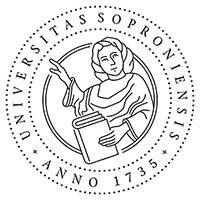The approach of teaching candidates to physical education reflected in a comparative study
DOI:
https://doi.org/10.17165/TP.2018.4.1Abstract
The attitude towards physical education of pedagogues who work as teachers may determine and influence the quality of teaching this subject. For this reason we examined the teaching candidates’ attitude towards physical education as a subject from different angles, which might have an influence directly and indirectly on their future work - in the case of choosing this profession.
The structure of the research was based on an attitude-scale survey in which the students were asked to indicate the level of their agreement or disagreement with previously formulated statements. This pattern of the research was completed by 676 students in the teaching programme from 6 institutions, from each year and cultural domain within the faculty. From the answers it can be clearly stated that students consider physical education to be important, although in terms of professional-like questions they tend to be indecisive. The results were compared with respect to gender and cultural domain. The opinion of different genders showed great similarity, however the comparison of cultural domain seemed to have divergence, especially concerning those with physical education as their cultural domain.
The results draw attention to such quintessential phenomena that would be worth treating more emphatically regarding both theoretical and practical training. In order to provide students a background knowledge that contributes to success with regards to their work - also in the field of physical education -, a deliberate way of treating this previous information must be of crucial concern.
References
Domokos, Á. (2015). A relaxáció bevezetésének problematikája az oktatásban. In: Nagyházi, B. (szerk.): Képzés és Gyakorlat. IX. Képzés és Gyakorlat Nemzetközi Neveléstudományi Konferencia: Nevelés és tudomány, neveléstudomány a 21. században: Tanulmánykötet. pp. 363–371. Kaposvári Egyetem Pedagógiai Kar, Nyugat-magyarországi Egyetem Benedek Elek Pedagógiai Kar, [online] http://trainingandpractice.hu/sites/default/files/egyeb-kotetek/KE_9_Kepzes_es_Gyakorlat_TK_P001-457.pdf [2018. július 2.]
Kis, J. (1989). Attitűdök, jellemvonások alakítása, képességtermelés a testnevelésben és a sportban. A Testnevelési Főiskola közleményei, 9. évf. 2. sz. Melléklet, pp. 3–38.
Báthory, Z. (1989). Tanulói kötődések vizsgálata négy tanulói korosztály körében. Pedagógiai Szemle, 39. évf. 12. sz. pp. 1162–1172.
Báthory, Z. (2000). Tanulók, iskolák-különbségek. Egy differenciális tanuláselmélet vázlata. Budapest: Tankönyvkiadó.
Földesiné, Sz. Gy. (1982). A testnevelésórák iránti attitűdökről egy empirikus vizsgálat alapján Testnevelés tanítása, 18. évf. 4. sz. pp. 105–111.
Földesiné, Sz. Gy. (1982). A testnevelésórák iránti attitűdökről egy empirikus vizsgálat alapján Testnevelés tanítása, 18. évf. 5. sz. pp. 138–142.
Gombocz, J. (1999). Az iskolai testnevelés problémái az ezredfordulón. Kalokagathia, 37. évf. 1–2. sz. pp. 15–39.
Hamar, P. – Karsai, I. (2008). Az iskolai testnevelés affektív jellemzői 11–18 éves fiúk és lányok körében. Magyar pedagógia, 108. évf. 2. sz. pp. 135–147.
Jankovics, J. (1990). A tanulóifjúság testneveléssel és sporttal kapcsolatos attitűdjei. A Magyar Testnevelési Egyetem közleményei, 10. évf. 2. sz. pp. 31–63.
Oláh, Zs. – Makszin, I. (2005). A tanulók viszonyulása a testneveléshez és a testnevelési osztályzatokhoz. Magyar Sporttudományi Szemle, 6. évf. 21. sz. pp. 23–26.
Downloads
Published
Issue
Section
License
Copyright (c) 2018 Kiss Zoltán, Szabó Eszter

This work is licensed under a Creative Commons Attribution-NonCommercial-NoDerivatives 4.0 International License.












